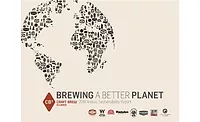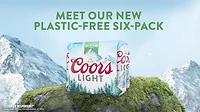Sustainability influences secondary packaging market
Experience-focused packaging appeals to millennial consumers

At the 2019 Beverage Forum conference, high-ranking beverage executives addressed the impact that packaging waste has had on their forward-looking plans. Although much attention is given to primary packaging materials, the secondary packaging materials market also is seeing the effects of this evolving market.
“Our consumer insights data tells us that making fiber-based packaging as strong, efficient and sustainable as possible strengthens trust in our customers’ brands,” says Britt Staley, sales and marketing manager for the beverage end market at Atlanta-based WestRock. “According to our 2018 Packaging Matters study, 62 percent of those surveyed [said] packaging that is designed to be recyclable, reusable or biodegradable helps build trust in a product. Making responsible material selections, avoiding single-use plastics, and carefully optimizing packaging design to minimize material use without compromising performance are critical aspects of how brands communicate their eco-conscious position to consumers today.”
Recently, WestRock conducted its Packaging and Sustainability insights study, which surveyed 2,400 U.S. consumers about their attitudes toward environmental issues, and sustainable packaging and behaviors. “[T]hree-out-of-four consumers believe materials used in packaging are an important way companies can show their interest in environmental concerns and sustainability,” Staley says. “Paper-based packaging is perceived to be more positive for the environment and can lead to higher brand likability relative to plastic or foam materials.”
Bret Arnone, vice president of beverage commercial operations for Atlanta-based Graphic Packaging Internationals, echoes similar sentiments. “We’re seeing a shift in consumer preference for more sustainable materials — more specifically, paperboard,” he says. “They’re looking for products that are recyclable, biodegradable and lessen their environmental impact.”
Rick Gessler, vice president of engineering for St. Paul, Minn.-based Delkor Systems, also highlights the impact that sustainability is having on the secondary packaging market.
“Sustainability pushes by retail companies such as Walmart has rippled down to not only the food and beverage producers but also to companies such as Delkor Systems,” he says. “It’s pushed us to innovate our patented pack designs that we offer along with our automated packaging machines. For instance, Delkor’s shelf-ready package Delkor Turbo Case allows companies to ship two or more display trays of rigid containers such as bottles in a single shipper by shrink wrapping the trays together with a top pad for stability.”
An experience
As sustainable packaging becomes a bigger part of a brand’s ethos, suppliers and beverage-makers are coupling movement with experience-themed packaging.
“Consumers today are all about experiences and ‘living their best life.’ According to a study by the Harris Group, 72 percent of millennials prefer spending money on experiences rather than stuff,” WestRock’s Staley says. “This attitude extends to their beverage consumption: they seek out adventure and unique flavors. Millennials are becoming loyal to brands that provide new and unique experiences.”
As an example, Dogfish Head developed a Summer Ice Pack. “Last summer, the brand wanted a unique multipack to elevate the consumer experience and function as a recyclable single-use cooler, enabling consumers to add ice directly into the pack keeping their beer cans cold on the beach or the trail or wherever their adventure takes them,” Staley explains. “WestRock designed a gusseted pack that, when combined with the unique wet-strength properties of CarrierKote paperboard, enables the package to retain any melted ice while consumers enjoy the ice-cold beer.”
Distributor pre-orders of the pack sold out mid-summer, Staley notes, highlighted the power of secondary packaging.“From small adjustments like targeting a new package configuration to more complex engagements like packages enabling augmented reality and connected packaging, we expect to see more and more brands identifying ways to leverage secondary packaging to engage and connect with their consumers in fun new ways,” she says.
When it comes to leveraging the benefits of secondary packaging, Graphic Packaging’s Arnone highlights the connection it can make with consumers.
“Secondary packaging can certainly help a brand get noticed through billboard and graphics,” he says. “It can provide the needed space to tell the brand’s story and serve as another advertising tool to connect with the consumer. The packaging also reinforces the brand if it conveys quality and ease of transport from the shelf to the consumer’s home.”
Charlotte, N.C.-based Roberts PolyPro, a division of ProMach, is bringing branding to its craft beer can carriers through the addition of customer branding and messaging.
Brewers can customize the carriers with their company logo or their product brands as well as custom colors or unique messaging to promote charity events, seasonal, and one-off brews, the company says. BI
Looking for a reprint of this article?
From high-res PDFs to custom plaques, order your copy today!





